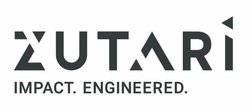Options for the patient-care continuum during the Covid-19 pandemic
Internationally, about 90% of patients recover without any respiratory support, while 6% to 10% of patients need respiratory support from medical personnel. In South Africa, the number may be higher due to the numbers of patients already affected by HIV, TB and lifestyle diseases.
The international norms for the provision of respiratory support devices in health facilities have been applied in South Africa, as in the UK, the European Union, the US and China. South Africa has sufficient hospital beds to serve the normal patient case load when private and public beds are pooled.
However, this could change drastically during the Covid-19 pandemic. Hence the government’s emergency response has focused on slowing the pace of infections to reduce the peak patient loads needing respiratory support, protecting healthcare workers, increasing the number of healthcare workers, increasing the number of healthcare beds, increasing the number of respiratory-support devices and patient care.
If a patient is struggling to breathe, paramedics may use oxygen and/or Ambu-bag during patient transport. The Ambu-bag is a manual device used to pump air into the patient’s lungs. This inflates the lungs to increase the surface area available for oxygen to cross from the lungs into the bloodstream.
The patient is triaged at the hospital, which is a rapid assessment and decision on immediate treatment, ideally including a chest X-ray. About two thirds of patients needing respiratory support will improve with non-invasive respiratory support.
Some patients require 20% to 100% oxygen delivered via low-flow nasal cannula (LFNC) for a short time. Oxygen is delivered from an oxygen cylinder or outlet from the centralised hospital supply system via the gas blender (oxygen meter) to the nasal cannula, or a mask or non-rebreather. Medical staff use the gas blender to control the oxygen concentration supplied to the patient.
In a resource constrained environment, some patients could receive 20% to 100% oxygen delivered via a high-flow nasal cannula (HFNC), though this isn’t recommended for Covid-19 patients due to cross-infection risks.
Most patients require Continuous Positive Airway Pressure (CPAP) treatment. A CPAP machine uses a hose and mask or hood to deliver constant and steady air pressure. Standalone devices are used commonly at home to manage sleep apnea, and in neonatal units.
However, large-scale solutions will be more suitable for the expected peak patient load. Oxygen and humidity can be introduced into the air supply, as warmed, humidified and oxygenated air is easier for the patient and aids in recovery. Oxygen supply is important in the treatment of Covid-19 patients.
A few patients may benefit from Bi-level Positive Airway Pressure (BPAP) treatment. Similar to a CPAP machine, a BPAP machine is a non-invasive form of therapy delivering pressurised air through a mask to the patient’s airway. The main difference is that BPAP machines have two pressure settings: the prescribed pressure for inhalation (ipap), and a lower pressure for exhalation (epap). The dual settings allow the patient to get more air in and out of their lungs. However, CPAP may be more effective than BPAP for Covid-19 patients.
Some patients need to be treated with pronation plus HFNC or CPAP, whereby the patient is awake and lying face-down on their front. All of these treatments rely on pressure control so that the patient’s lungs don’t over- or under-inflate.
Critically-ill patients may require invasive respiratory support, which involves inserting a tube through the mouth (an endotracheal tube) or neck (a tracheostomy tube), connected to a ventilator to deliver oxygen to the lungs. This is a specialist procedure carried out by accredited Intensive Care Unit (ICU) staff.
The ICU ventilator is a high-tech device providing greater control of a wide variety of ventilation parameters, and usually displays graphics to provide visual feedback of each breath. A respiratory specialist will optimise ventilation management, adjustment and weaning.
Covid-19 patients could remain on invasive respiratory support for three to six weeks. Weaning off the ventilator means that the patient moves down the patient-care continuum, perhaps using some of the other devices or reverse of the therapies described above.
Hence the immediate government focus is on importing any available stock of Ambu-bags, LFNCs, CPAPs, ICU ventilators, oxygen concentrators and the entire range of oxygen-enrichment devices. In addition, the following will need to be stockpiled: Suitable patient interfaces (masks, hoods, etc.), spare parts for these devices, and consumables (tubes, connectors, filters, valves, cannula, etc.)
Another focus area is repairing existing devices, and repairing and upgrading hospital facilities to allow many more patients to use respiratory devices. An option is the local manufacture of commonly-used designs on licence or open plan, whereby clinical experts have attested to the use of such equipment in meeting the necessary requirements.
The Department of Basic Education (DBE) is using Aurecon’s Education Facilities Management System (EFMS) to capture and report on the status of school infrastructure and learner numbers. The Aurecon Programme Advisory unit, seconded to the DBE, has prepared lists of schools and hostels that could be used as temporary healthcare facilities should the Covid-19 pandemic result in large numbers of patients needing care outside of their homes.
Engineering, design and advisory company Aurecon is also providing advisory support to the State about the provision of temporary facilities; how to convert buildings into healthcare facilities, healthcare worker hostels, and quarantine sites; and how to upgrade existing hospital space into ICU and high-care units. Aurecon is currently in the process of rebranding as Zutari, after officially announcing the separation of the African business from the Aurecon Group, effective from 1 January 2020.
Kate Roper, Client Director, Health and Education, Aurecon
Ends
Notes to the Editor
To download hi-res images for this release, please visit http://media.ngage.co.za and click the Aurecon link to view the company’s press office.
Aurecon Media Contact
Rashree Maharaj
Marketing and Communications
Email: Rashree [dot] Maharaj [at] aurecongroup [dot] com
Tel: (012) 427 2000

